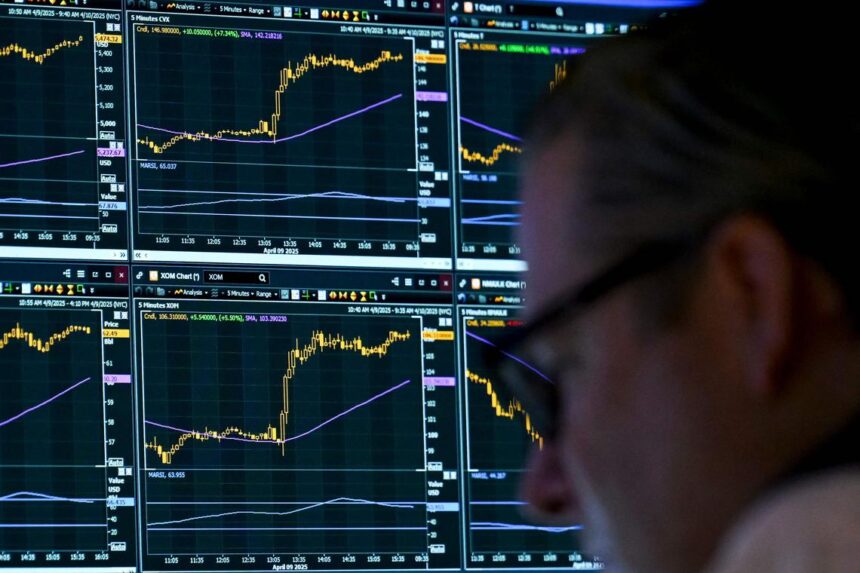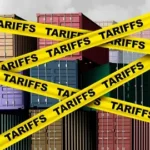Stock markets are always pulled between the two emotional scales of investors, but the present atmosphere has heightened uncertainty like no other time before. Tariff policies brought up by President Donald Trump regarding trade deals are still a debate among countries. Added to that is high market volatility. Investors are left with an unfavourable balance, scrambling towards safe-haven assets to secure their portfolios from the gloom. Uncertainty continues, as the unfolding of the policies will compel the financial community to be cautious, watchful, and highly reactive.
The Cloud of Tariff Uncertainty
What soaring sentiment despite the rallies in stock markets do, however, is stretch the underlying markets thinner and thinner. Many experts claim that coupled with unpredictable tariff announcements, one of the adverse effects those companies suffer is the difficulty in getting good forecasts for their earnings; hence, the increased market volatility. Even previously strong sectors are collapsing under the weight of trade deals. As further tariff announcements loom, investors are increasingly looking to safe-haven assets such as gold and U.S. government bonds for protection against the backlash from new tariff announcements.
The most valid point here is that the stock markets does not really have a pulse beyond short bursts of optimism that are repeatedly crushed under the fresh uncertainties attaching to new trade deals. Economic indicators being closely watched will not help much because these are records of past measures, not forecasted jolts and tremors that might be created by tariff wars.
Trade Deals: The Key to Market Stability
These are the crux of ongoing chaos: thundering negotiations of trade deals. It may stabilize things, or bring more calamity to the stock markets, depending upon what happens to these trade deals. Corporations that are said to be vulnerable to unpredictable tariff policies rely largely on global supply chains.
The effects include enormous market volatilities and the endurance of very few resilient portfolios. Some have elected to cut back their exposure to risky sectors, with a shift towards safe-haven assets which traditionally perform well, especially in times of economic turbulence.
Furthermore, even a really minor hiccup in the trade deals negotiations can set off tremors around the globe and make waves in stock markets across continents and seas due to such interdependence among economies worldwide. Such fears very much multiply and lead the stock markets into excessive market volatility, especially at such times.
For More Trending Business News, Follow Us 10xtimes News
Global Markets React and the Search for Safe-Haven Assets
Global investors are not spared from the ramifications of U.S. tariffs and non-existent trade deals as ripples generated by those policies make it difficult for other economies to resist succumbing to the effects. European and Asian stock markets react very much to every significant step taken in Washington to induce more market volatility. Investors from all continents come ever closer to putting their funds in what are now called safe-haven assets for cushioning purposes against capital flows triggered by economic shocks.
At present, the investments in safe-haven assets, such as gold, the Japanese yen, and U.S. Treasuries, have surged. These safe-haven assets have gone on to offer some solace in the bond markets during this topsy-turvy time of billowing objections from tariff threats and failed trade deals.
When viewed in the context of interconnectedness of economies globally, considering no economy, with the exception of perhaps North Korea, will ever exist in isolation from any fallout, then tariff announcement indeed sends ripples into many markets to intensify market volatility, after which one witnesses new cautious investors going the whole hog in safe-haven assets to stabilize their investments.
Strategies for Navigating a Volatile Stock Market
With the uncertainty around, a lot of seasoned investors have changed their strategies. Rather than chase after quick profits, they head towards defensive sectors and safe-haven assets that weather the storm. Diversification has become one key theme where the portfolios are spread across sectors more balanced against tariff hikes and trade deals.
At the same time, risk management is taking precedence more than ever. Many are using options and hedging strategies to protect against the impacts of sharp market moves from surprise-popping tariff news or trade deals.
Safety has also become synonymous with caution as investors prepare for what seems to be even more dramatic bouts of market volatility. Certainly, the initial instinct would be sell, buy, and swing with the ebbs and flows of the stock markets. Most wise investors have opted to take refuge in safe-haven assets while waiting for greater clarity about the nature of the trade deals before venturing onto the market themselves.
But patience and a conservationist’s strategy seem to be the best approach to living in a landscape so high stakes and highly charged with unpredictability.






